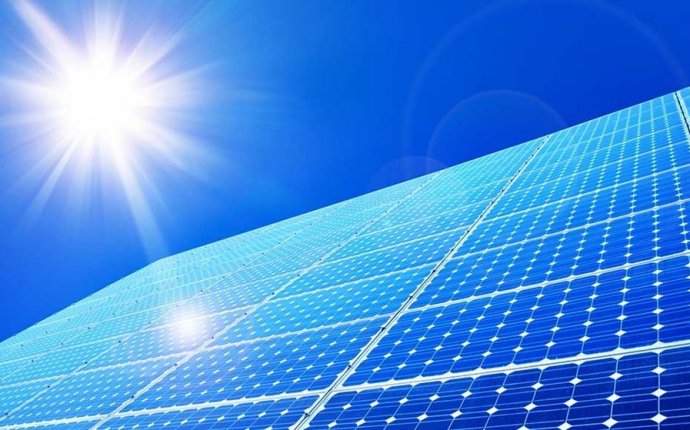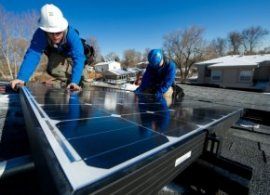
Best Solar for Home
 Solar panels promise to lower your electricity bill by supplementing the energy you buy from the local power company. But choosing and installing solar panels can be an overwhelming task.
Solar panels promise to lower your electricity bill by supplementing the energy you buy from the local power company. But choosing and installing solar panels can be an overwhelming task.
Solar cells, which are linked together in a panel, convert sunlight into electricity via photovoltaic materials, such as silicon. When sunlight hits these materials, the light's energy is absorbed, and that energy causes electrons within the material to escape from their position in the atom of silicon or other photovoltaic material. These released electrons are captured to produce an electric current.
As of the third quarter of 2014, more than 17, 500 megawatts of cumulative solar electric capacity are operating in the United States, which is enough to power more than 3.5 million average American homes, according to the Solar Energy Industries Association. Residential solar panels were the fastest-growing category, with 58 percent growth during the quarter, the association reports.
"There are many systems that make great economic sense today, and these are the types of systems that are being installed in large numbers, " said Tommy Cleveland, a solar energy engineer at the North Carolina State University Solar Center. "They are primarily in locations with expensive electricity rates, making the energy produced by solar systems very valuable."
Editor's note: Looking for solar panels? For information to help you choose the one that’s right for you, use the questionnaire below to receive information from vendors for free:
If you make the leap, however, it pays to get the right kind of panels. Our sister site, Top Ten Reviews, conducts in-depth reviews of solar panel technology. Here are their top three recommendations for this green technology.
**********************
The Kyocera KD315GX-LPB solar panel gets top marks for its high solar efficiency, which is the amount of energy converted from sunlight per unit of surface area in the panel. At 16 percent, this solar panel is not the most efficient on the market, but it ranks high. (Silicon-based solar cells like this one usually operate at an efficiency of 18 percent or lower, according to the University of Pennsylvania.) The Kyocera KD315GX-LPB panels are also durable and come with a complete five-year warranty. The company guarantees that the panels' power output will remain at 80 percent of the minimum power promised by manufacturers for at least 20 years.
The panels meet industry standards for withstanding loads (it can hold up under 113 pounds per square foot of pressure from snow or ice on the roof) and can handle a beating by hailstones with a 1-inch diameter in winds of up to 51 mph.
Ease of use: As with any solar panel array, you'll need to check your local regulations and permitting requirements before installing. You can mount Kyocera solar panels yourself if you're handy enough and if your local laws allow it. Experts advise against doing so unless you really know what you're doing, however.
"It is best to get a professional installer to install them, " Cleveland told Live Science. "There is serious danger working with electricity, so someone not properly trained to install a system can easily get hurt or killed."









